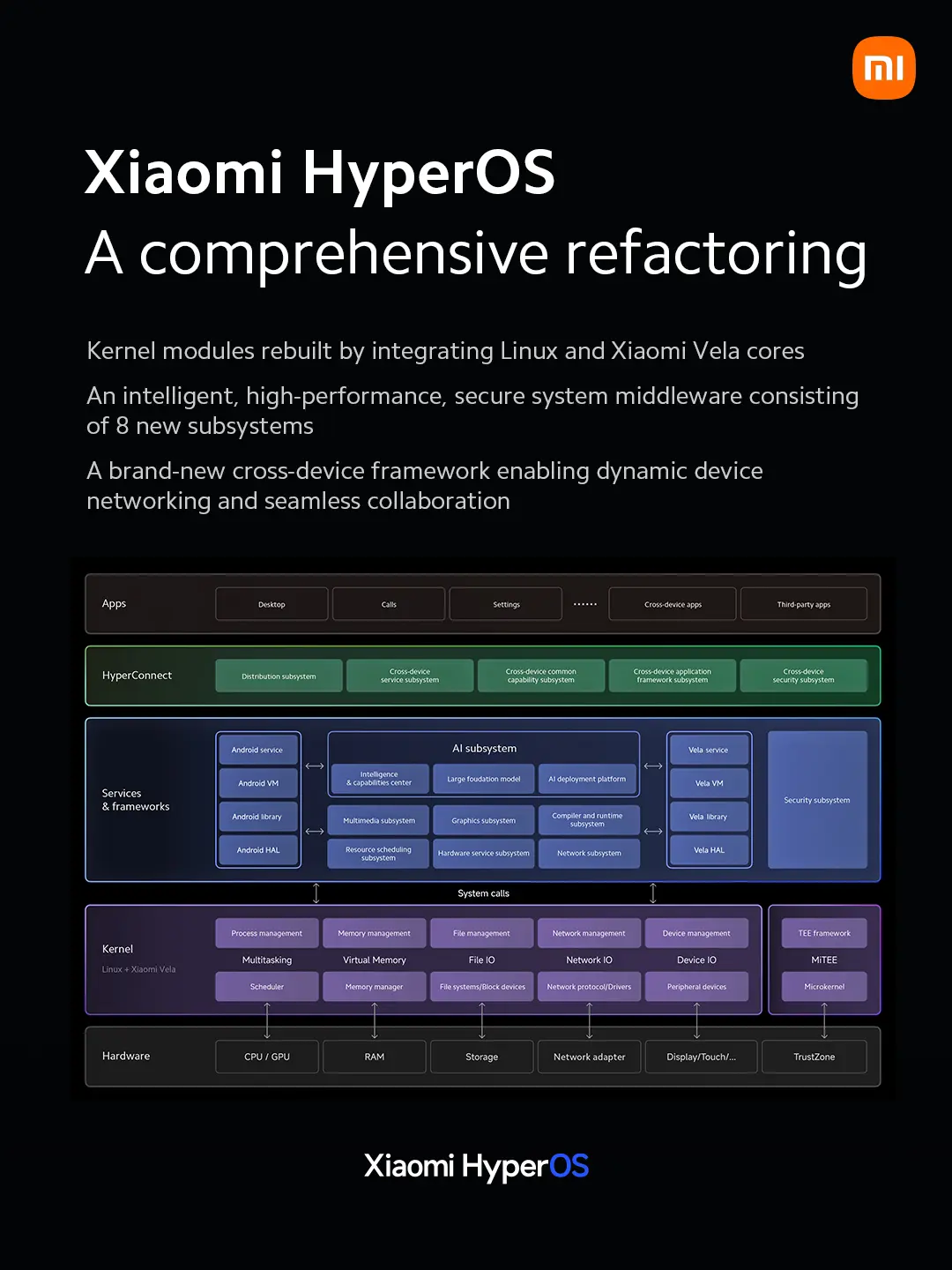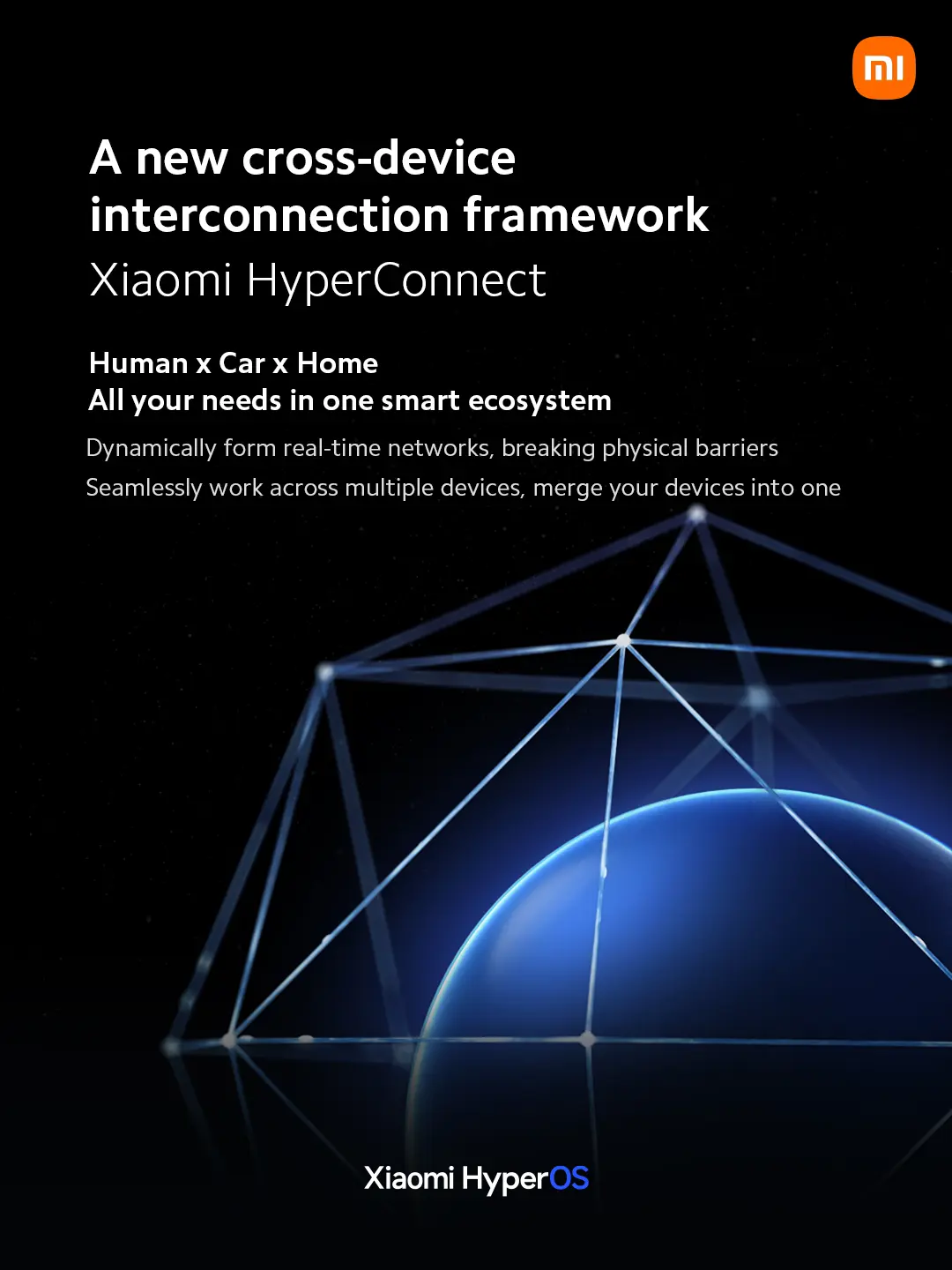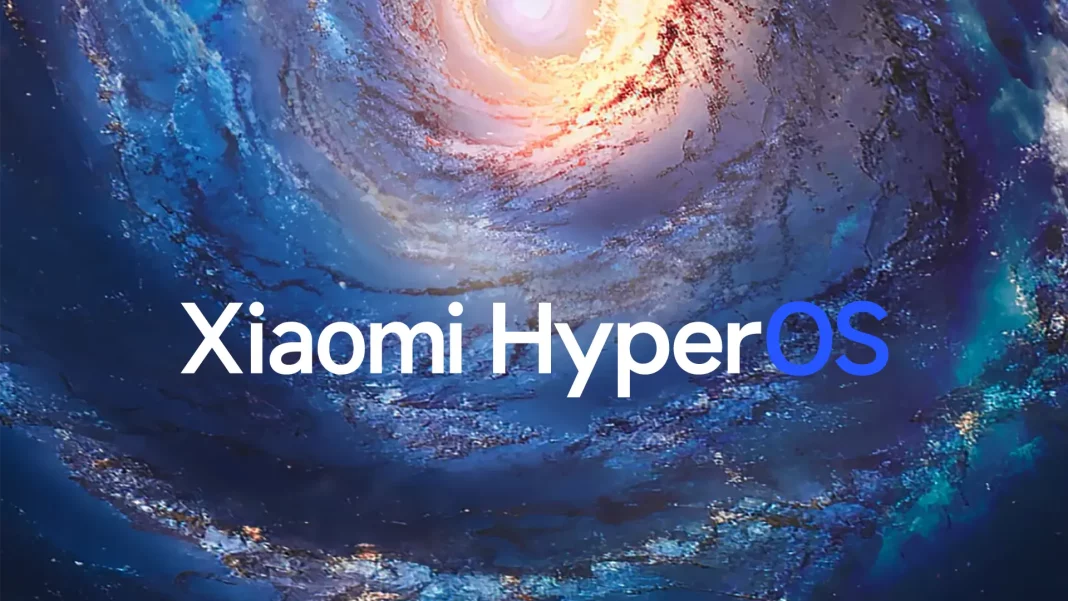Xiaomi unveils Xiaomi HyperOS, a human-centric operating system designed and tailored to connect personal devices, cars and smart home products in a smart ecosystem.

Xiaomi held its launch event, "Leap Beyond the Moment", to announce Xiaomi HyperOS, which powers the smart ecosystem of personal devices, cars and home products. He focused on four key objectives. Xiaomi HyperOS will be pre-installed in domestic markets on the newly launched Xiaomi 14 Series, Xiaomi Watch S3, Xiaomi TV S Pro 85″ MiniLED and other devices.
Low-level refactoring - unlocking the full potential of assets
Xiaomi has achieved remarkable growth over the past 13 years, expanding from just 100 users to an impressive 1.175 billion users worldwide, while its product range now spans more than 200 categories. In the Internet of Things era, Xiaomi has faced the unique challenge of navigating the multitude of device operating systems and the complexity of interoperability challenges across different ecosystems. This experience led Xiaomi to innovate more than ever before, resulting in Xiaomi HyperOS. In development since 2017, Xiaomi HyperOS aims to bring coherence to the IoT space. Its mission is to unify all ecosystem tools into a single, integrated system framework. The ultimate goal is to ensure peak device performance, provide a unified user experience and facilitate seamless connectivity across all Xiaomi devices.

The core of Xiaomi HyperOS is Linux and Xiaomi's proprietary Xiaomi Vela system. Its exceptional compatibility and precise system resource management capabilities allow it to deliver ideal performance for all devices. The Xiaomi HyperOS base layer supports over 200 processor platforms and more than 20 standard file systems, covering hundreds of device types and thousands of SKUs. It enables flexible configuration, operation and deployment to meet hardware requirements. Compatible device RAM sizes range from 64 KB to 24 GB. Following the principle of configuring only the required resources based on changing hardware, coupled with file deduplication and compression of the underlying IO stack, Xiaomi HyperOS is naturally lightweight: the system firmware on smartphones occupies only 8.75 GB, a significant improvement over competitors.
Xiaomi HyperOS boasts sophisticated scheduling capabilities that can accurately manage hardware and tasks in diverse and complex scenarios. It achieves this through technical tools such as dynamic thread prioritisation and dynamic evaluation of task cycles, resulting in optimal performance and energy efficiency. Running resource-intensive games on a Xiaomi HyperOS-equipped smartphone enables more stable frame rates and lower power consumption compared to stock Android and other highly customised operating systems. On lightweight devices with limited processing power, the scheduling benefits of Xiaomi HyperOS are even more apparent; it supports sharing tasks across multiple computing units for cooperative processing, which maximizes hardware performance. Xiaomi HyperOS has also undergone a comprehensive overhaul of technical modules, including the file system, memory management, imaging subsystem and networking system, with the aim of efficiently exploiting and optimizing the different hardware capabilities of different devices to ensure optimal performance.
Cross-End Smart Connectivity - A HyperConnect takes connectivity to the next level
Xiaomi HyperOS not only delivers excellent performance, it also breaks down the barriers of traditional system architectures. At the heart of the system is an innovative Cross-End Intelligent Connectivity Framework, HyperConnect, which facilitates real-time networking between multiple devices. With the introduction of an integrated device hub, users can now actively manage almost the entire range of connected devices, allowing them to easily monitor and manage their connected ecosystem from anywhere, whether at home, on the road or in the office. This brings a new era of convenience and efficiency for users, who can seamlessly identify and operate all the devices within their Xiaomi ecosystem.

Xiaomi HyperOS harmonises all connected devices, allowing software to adapt to user needs. You can seamlessly switch camera sources during video conferencing, access car cameras from your phone, access the rear camera of your smartphone while using a tablet or laptop, and even connect your tablet to the internet via your smartphone. In addition, apps, clipboard content and notifications can be easily moved between devices as the user needs them.
Proactive intelligence - enables devices to understand user intentions
In the Internet of Things era, connectivity and integration of capabilities between devices is essential; Xiaomi HyperOS goes a step further in this regard by including an AI subsystem supporting advanced AI technologies, allowing devices to proactively assist users.
HyperMind is the cognitive hub of Xiaomi's device ecosystem, pioneering cross-device connectivity in the era of "proactive intelligence". This enables devices to proactively understand user needs and act accordingly. HyperMind uses the four sensing capabilities of devices - environment, vision, sound and behaviour - to learn user needs and automatically adapt devices. For example, if a user turns on the living room lights every time they open the smart door lock, HyperMind will automatically illuminate the room after learning this pattern after the user has asked for consent. This innovation simplifies complex, cross-device connectivity and reduces the cost of traditional machine learning, allowing users to enjoy the convenience of device connectivity without the need to understand complex logical understanding or triggering mechanisms.
Xiaomi HyperOS uses large base models, allowing them to empower system applications. Xiaomi AI Assistant now provides direct access to the text generation capabilities of the large base model through the user interface, enabling tasks such as speech generation and article summarization. The real-time transcription feature has been enhanced to transcribe video conference calls into notes and smart meeting summaries. Users can use spoken sentences to search for images in photo albums and create AI images based on existing portraits. An AI brush has been added to the tablet version of the "Mi Canvas" app, which can turn casual doodles into excellent works of art. In addition, third-party applications can also exploit the potential of the AI subsystem, such as document understanding via screenshots within WPS or one-click presentation creation.
To efficiently deploy large base models, Xiaomi HyperOS leverages the AI subsystem to integrate them into the NPU of the device. This support also extends to Xiaomi's proprietary large base models on smartphones, an example of which is the imaging base model, which has reduced model size and memory usage by 75%, and reduced drawing time from 100 seconds to just 5 seconds. These improved image generation capabilities are already enhancing features such as Xiaomi AI Assistant's "Text to Image" and "Image Extender" functions in the device's photo albums.
End-to-end security - the protecting users in all circumstances
At Xiaomi, user privacy and security are at the heart of every user experience, and we are committed to continuous improvement in this area. Xiaomi's proprietary TEE is the foundation of our security subsystem. Running on dedicated hardware, this isolated security operating system is specifically designed to protect sensitive information and covers a wide range of security features for smartphones and AIoT devices, such as biometrics, passwords and screen locks.
Xiaomi HyperOS puts a strong emphasis on security, and extends its security umbrella not only to individual devices, but also to interconnected security modules. This interconnected security module-based TEE ensures mutual trust between devices within the network. To further protect the entire network, Xiaomi HyperOS uses end-to-end encryption for data transfer between devices via TEE.
Open sharing - building and sharing the smart ecology together
Xiaomi HyperOS adheres to the open source principle, actively cultivates the open software ecosystem, and welcomes partners to join us in building an intelligent ecosystem and providing a better user experience together.
Xiaomi is proud to announce the open source release of Xiaomi Vela, an IoT software platform tailored for consumer IoT products. This platform, independently developed by Xiaomi, is based on the open source NuttX real-time operating system. Xiaomi Vela provides a unified software platform for different IoT hardware, simplifying development by abstracting away underlying hardware differences and offering a single software platform for top-level developers. This approach unifies different application scenarios, simplifies development and increases efficiency. By making Xiaomi Vela open source for IoT device manufacturers and developers, Xiaomi is driving IoT device innovation, improving performance, and enabling real-time connectivity across a broad spectrum of devices.
Xiaomi HyperOS is a human-centric operating system designed and tailored to connect personal devices, cars and smart home products in a smart ecosystem. The system represents a key step forward in Xiaomi's strategic vision to realize a "People x Car x Home" smart ecosystem.
The newly launched Xiaomi 14 series comes with Xiaomi HyperOS pre-installed, along with devices Xiaomi has launched in Chinese markets, such as the Xiaomi Watch S3, Xiaomi TV S Pro 85″ miniLED, and more.


















![[150] HyperOS heti hibajelentés](https://helloxiaomi.hu/wp-content/uploads/2024/04/hyperosbugreportindex-218x150.webp)


